Idea by
Ferdinand Ludwig and Daniel Schönle
baubotanik.org // ludwig.schönle
Call for ideas 2016
Baubotanik
Baubotanik
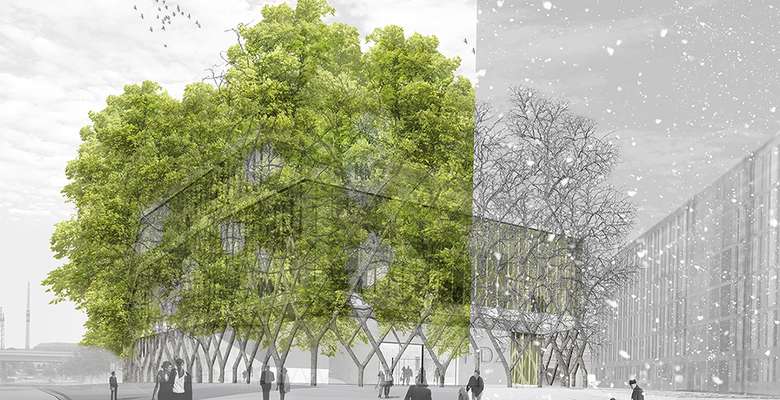
By using living trees as construction material the Baubotanik approach is breaking down the differences between the man-made and the natural. Baubotanik projects are built, but live. And they show all the positive aspects we know from trees: They provide shade, cool and filter the air, regulate the natural water cycle, produce oxygen and absorb CO2. Their impressive canopies are aesthetically enriching and a co-habitat for humans, plants and animals. Thereby they contribute to a higher quality of individual life and a resilient ecosystem.
At the same time Baubotanik is a challenge for architecture and a call to action for civil society. Innovative techniques allow realizing living buildings immediately in the dimension of fully grown trees. At the same time, designing living architecture questions our static design approach. It rather requires a process-based thinking, the acceptance of partly uncontrollable factors and the willingness to recognize these as aesthetic opportunities.

Baubotanik Footbridge demonstrating how canopies are becoming a matter of architecture. (design and realization: Ludwig/Storz/Hackenbracht 2005; Foto: Cira Moro)

Development of a connection between a living plant pillar and a stainless steel handrail over 5 years. The plants grow around the pipe and create a form fit. These details demonstrate the controversial relationship between nature and technology within the Baubotanik approach. They can be seen as a symbiosis between men and trees or as an abuse of nature where a plant is violated. This ambivalence is intentionally provoking a debate about the way we deal with nature in our culture.
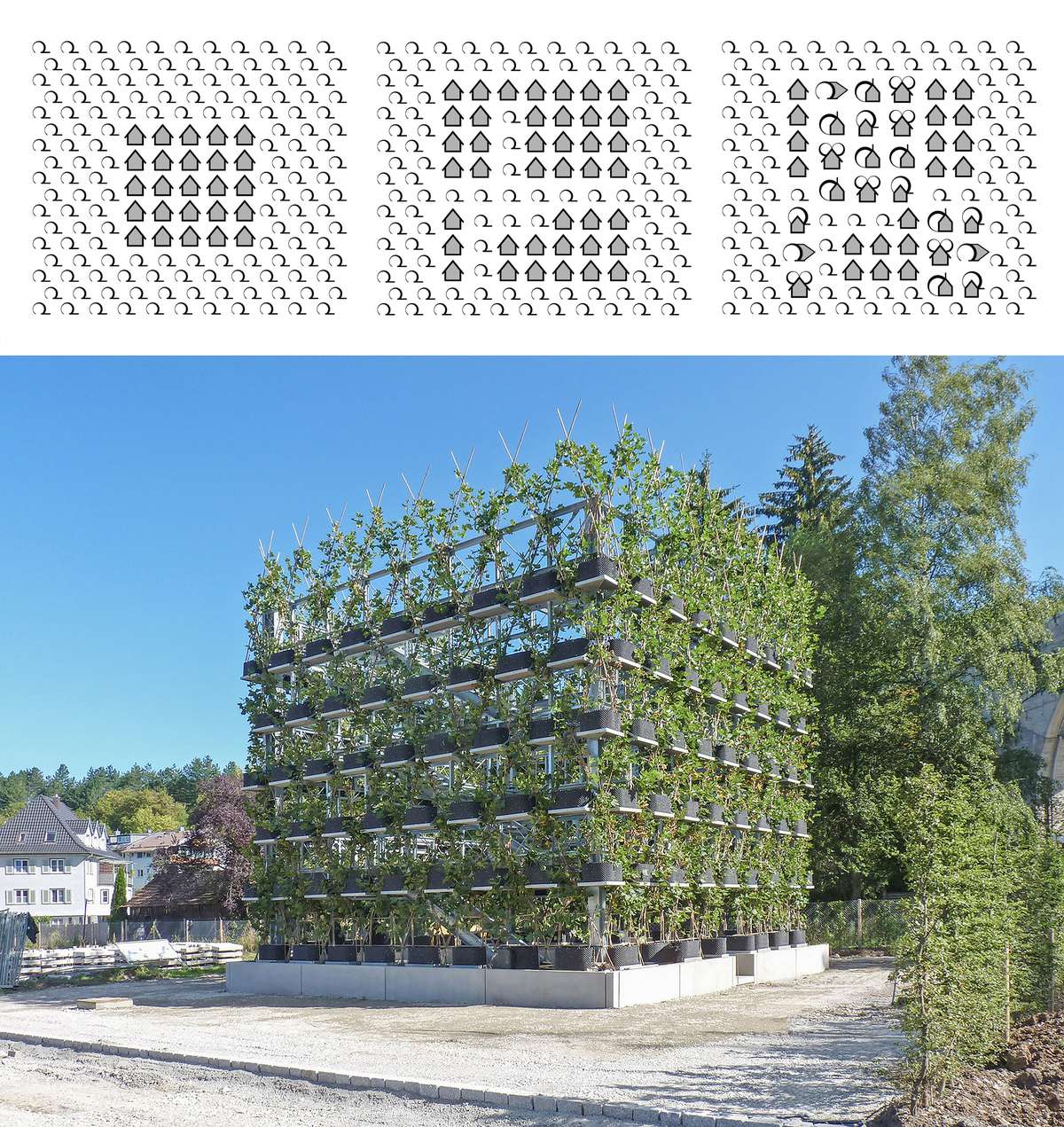
Baubotanik is dealing with new building typologies that redefine the relation between inside and outside, city and landscape, nature and culture: In the past the European city was seperated from the wild nature of the surrounding forests. Then trees entered the city and the city itself expanded into the countryside. This dispersion of architecture and nature is now carried on to an amalgamation where buildings and trees fuse to one unit. The Plane Tree Cube Nagold is an example for that.
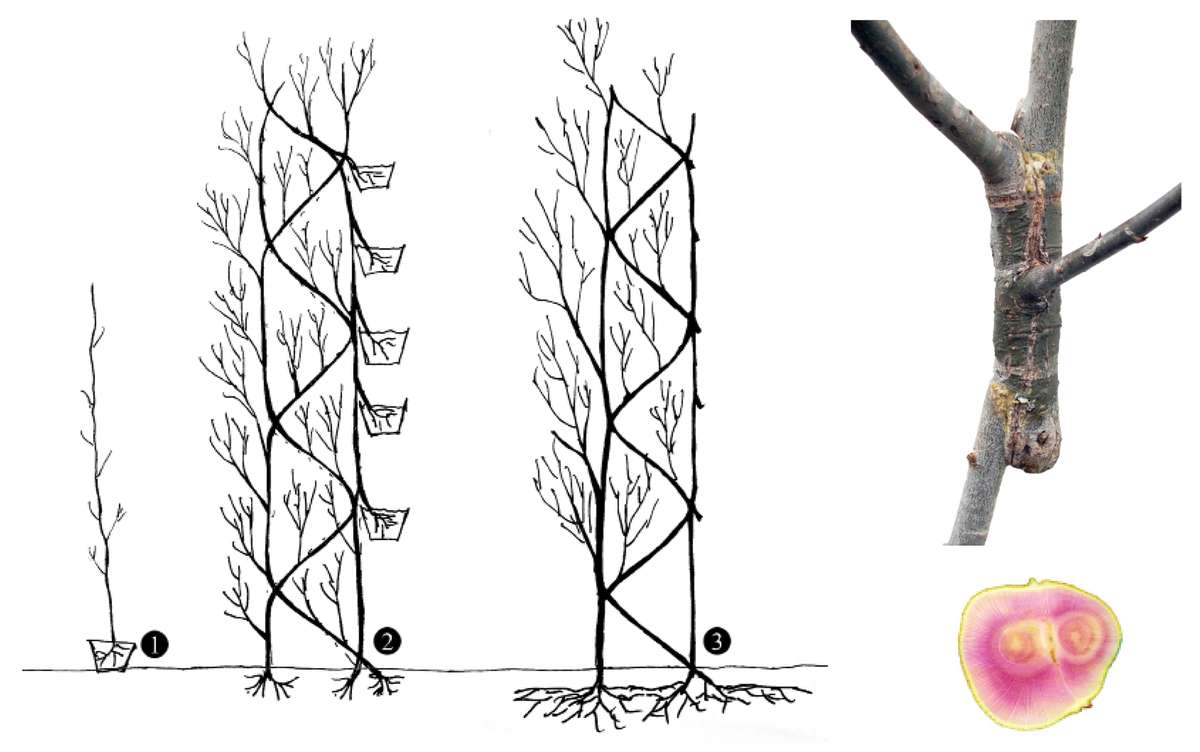
Inosculations are a key technique in Baubotanik constructions. The method of plant addition is making use of this effect by fusing hundreds of young plants to one “hyper-organism”. It is used to build living structures immediately in the required size. In the beginning the plants are supported by temporary scaffolding and watered and fertilized individually. Over time a self-supporting and self-sufficient structure emerges.
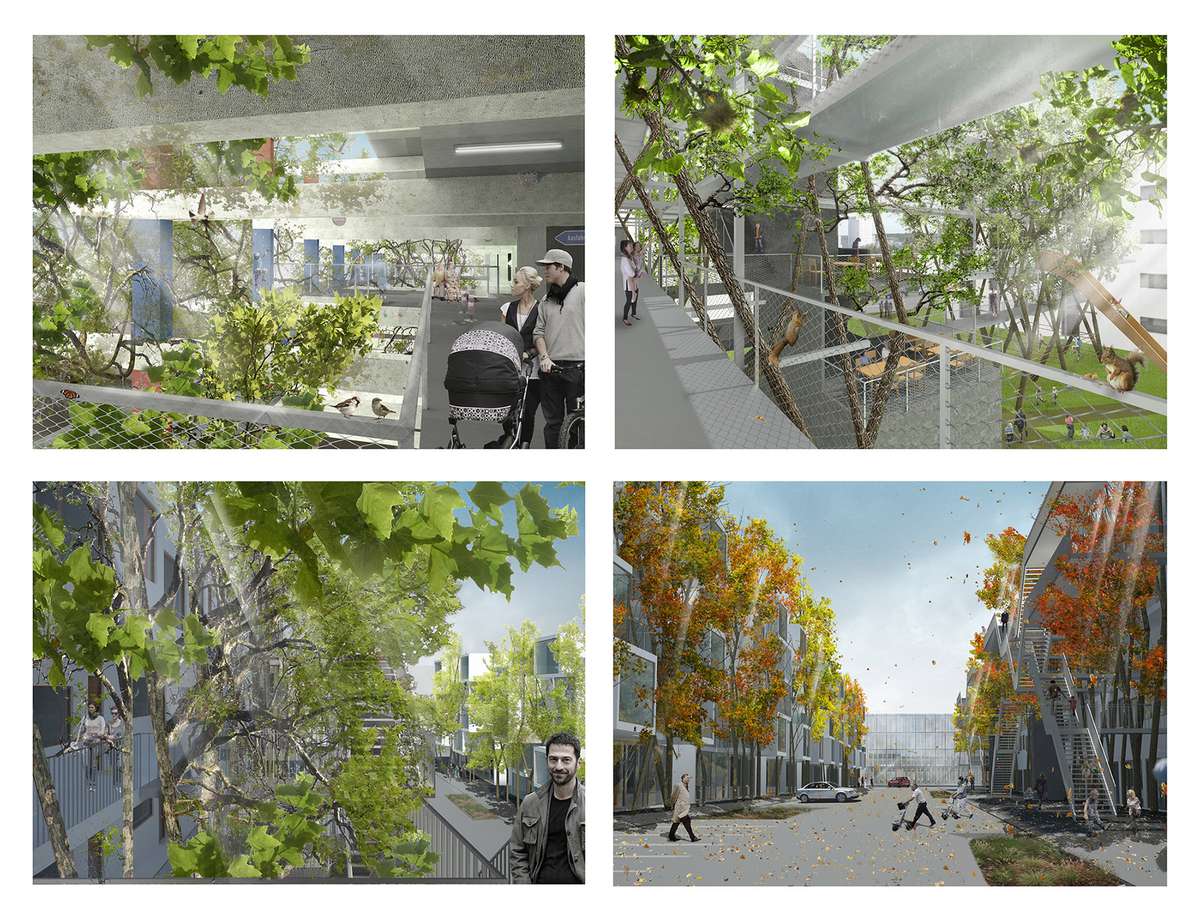
Examples from the research project KLIMOPASS that aims to develop specific design proposals and realization strategies for the practical implementation of Baubotanik in the context of climate change adaptation. To reveal Baubotanik as innovative form of urban greenery and to discuss its possible contribution to the solution of urban climate and urban ecology problems five design proposals for climate-active Baubotanik buildings, urban quarters and infrastructures were developed.
Baubotanik
Baubotanik

By using living trees as construction material the Baubotanik approach is breaking down the differences between the man-made and the natural. Baubotanik projects are built, but live. And they show all the positive aspects we know from trees: They provide shade, cool and filter the air, regulate the natural water cycle, produce oxygen and absorb CO2. Their impressive canopies are aesthetically enriching and a co-habitat for humans, plants and animals. Thereby they contribute to a higher quality of individual life and a resilient ecosystem.
At the same time Baubotanik is a challenge for architecture and a call to action for civil society. Innovative techniques allow realizing living buildings immediately in the dimension of fully grown trees. At the same time, designing living architecture questions our static design approach. It rather requires a process-based thinking, the acceptance of partly uncontrollable factors and the willingness to recognize these as aesthetic opportunities.
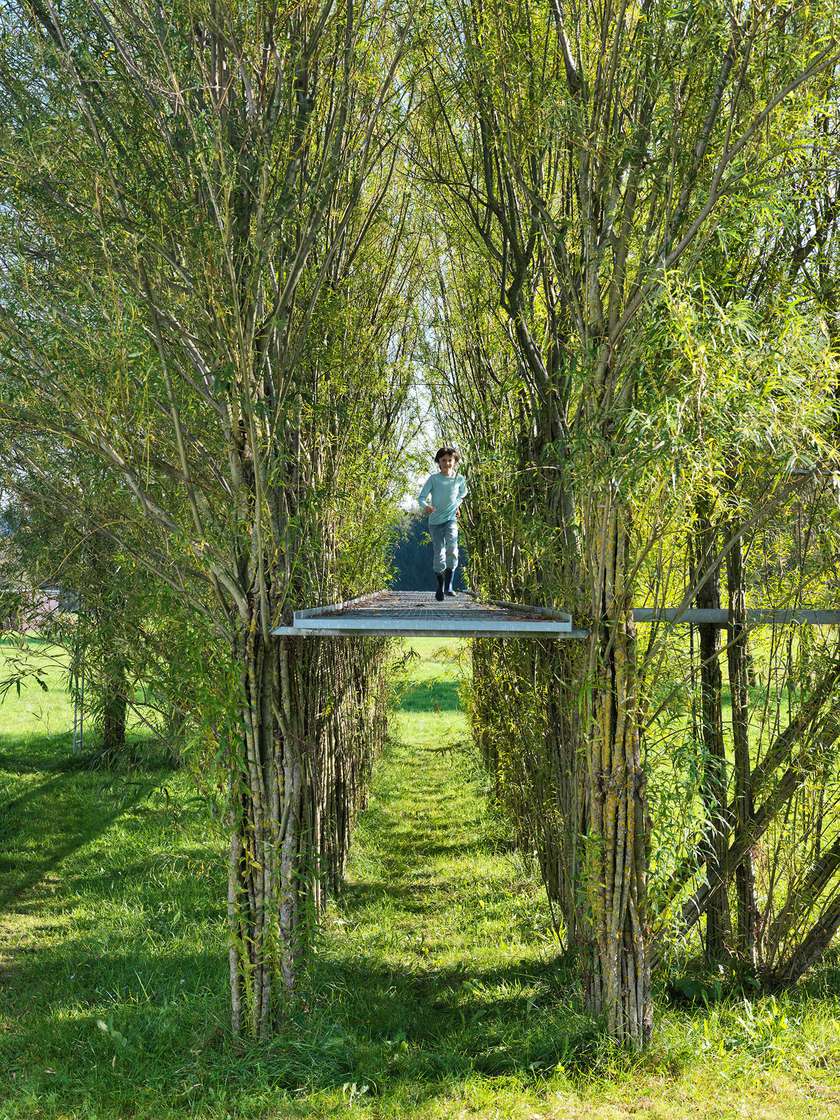
Baubotanik Footbridge demonstrating how canopies are becoming a matter of architecture. (design and realization: Ludwig/Storz/Hackenbracht 2005; Foto: Cira Moro)

Development of a connection between a living plant pillar and a stainless steel handrail over 5 years. The plants grow around the pipe and create a form fit. These details demonstrate the controversial relationship between nature and technology within the Baubotanik approach. They can be seen as a symbiosis between men and trees or as an abuse of nature where a plant is violated. This ambivalence is intentionally provoking a debate about the way we deal with nature in our culture.
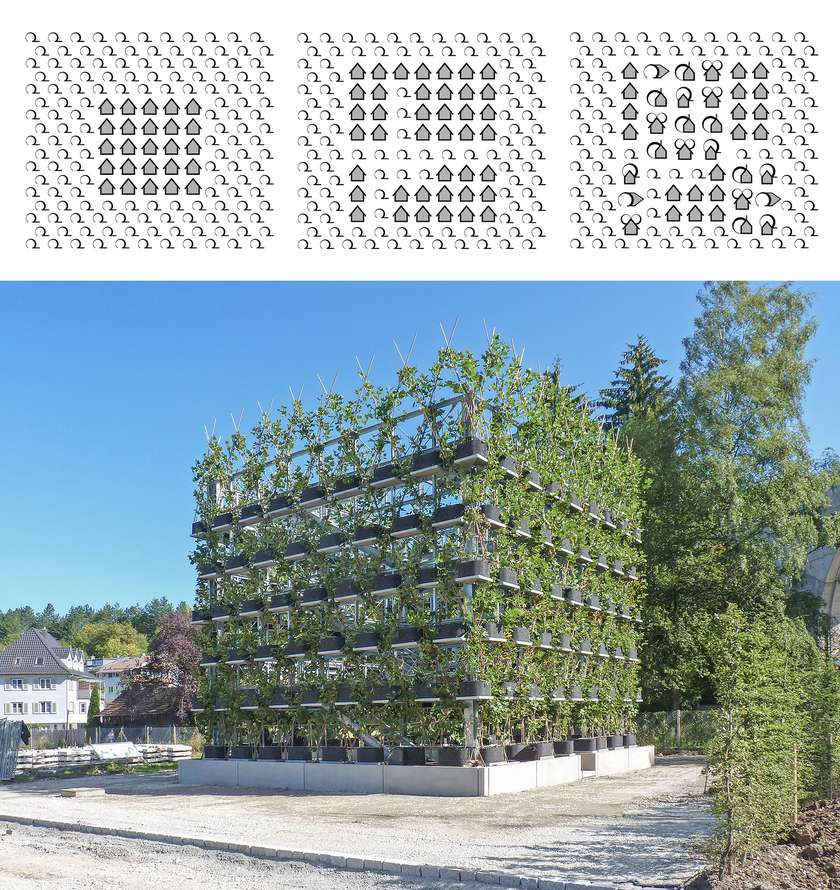
Baubotanik is dealing with new building typologies that redefine the relation between inside and outside, city and landscape, nature and culture: In the past the European city was seperated from the wild nature of the surrounding forests. Then trees entered the city and the city itself expanded into the countryside. This dispersion of architecture and nature is now carried on to an amalgamation where buildings and trees fuse to one unit. The Plane Tree Cube Nagold is an example for that.
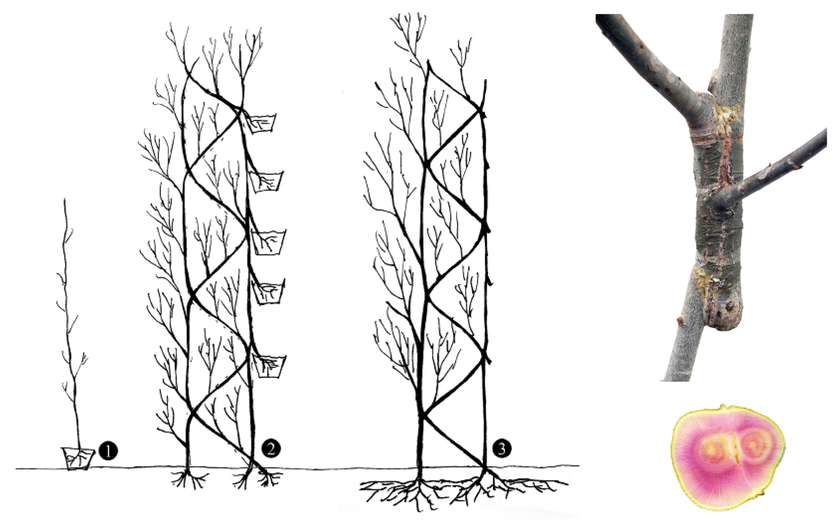
Inosculations are a key technique in Baubotanik constructions. The method of plant addition is making use of this effect by fusing hundreds of young plants to one “hyper-organism”. It is used to build living structures immediately in the required size. In the beginning the plants are supported by temporary scaffolding and watered and fertilized individually. Over time a self-supporting and self-sufficient structure emerges.
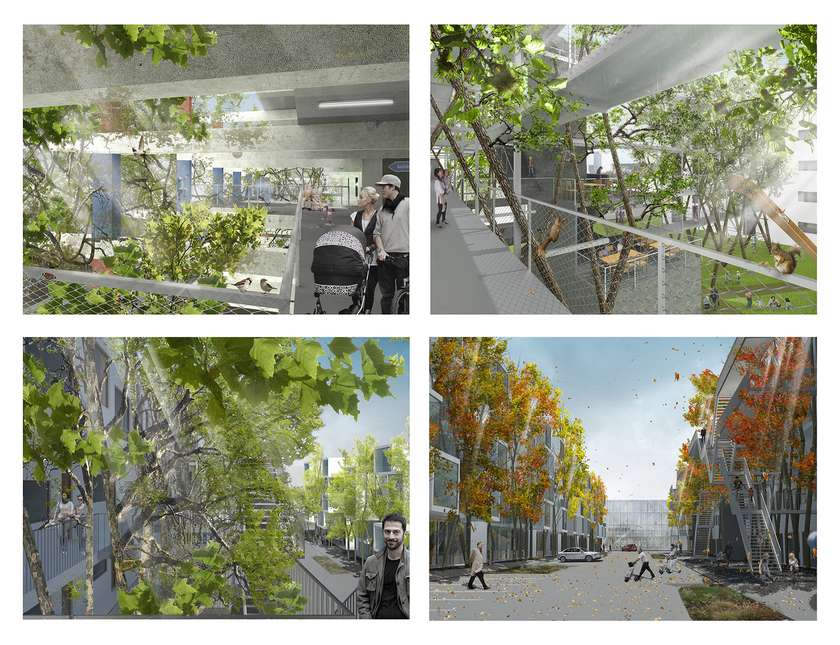
Examples from the research project KLIMOPASS that aims to develop specific design proposals and realization strategies for the practical implementation of Baubotanik in the context of climate change adaptation. To reveal Baubotanik as innovative form of urban greenery and to discuss its possible contribution to the solution of urban climate and urban ecology problems five design proposals for climate-active Baubotanik buildings, urban quarters and infrastructures were developed.